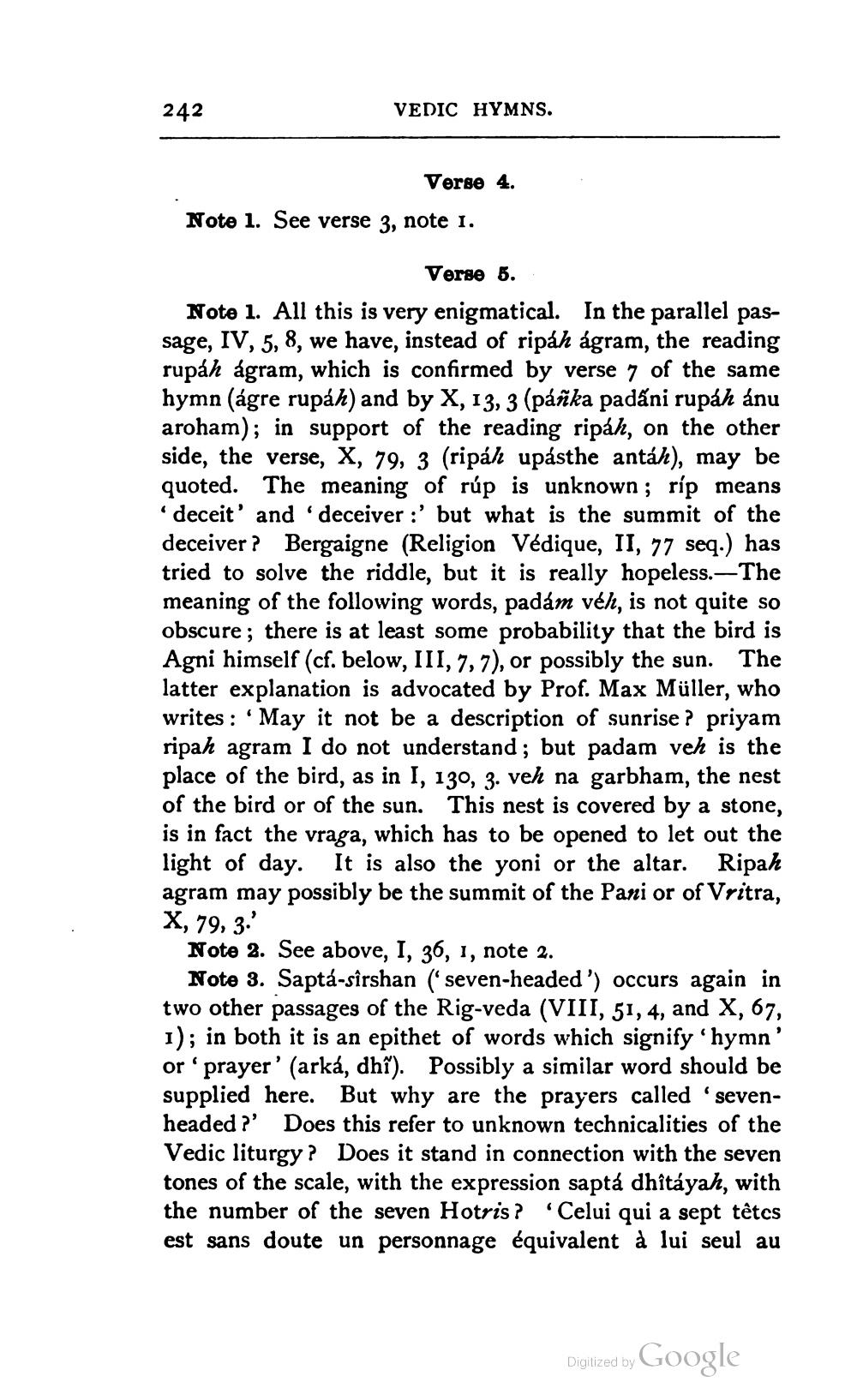________________
242
VEDIC HYMNS.
Verse 4.
Note 1. See verse 3, note 1.
Verse 5. Note 1. All this is very enigmatical. In the parallel passage, IV, 5, 8, we have, instead of ripáh ágram, the reading rupáh ágram, which is confirmed by verse 7 of the same hymn (ágre rupák) and by X, 13, 3 (páñka padáni rupáh ánu aroham); in support of the reading ripáh, on the other side, the verse, X, 79, 3 (ripáh upásthe antáh), may be quoted. The meaning of rúp is unknown; rip means
deceit' and 'deceiver :' but what is the summit of the deceiver? Bergaigne (Religion Védique, II, 77 seq.) has tried to solve the riddle, but it is really hopeless.—The meaning of the following words, padám véh, is not quite so obscure; there is at least some probability that the bird is Agni himself (cf. below, III, 7, 7), or possibly the sun. The latter explanation is advocated by Prof. Max Müller, who writes : May it not be a description of sunrise ? priyam ripah agram I do not understand; but padam veh is the place of the bird, as in I, 130, 3. veh na garbham, the nest of the bird or of the sun. This nest is covered by a stone, is in fact the vraga, which has to be opened to let out the light of day. It is also the yoni or the altar. Ripah agram may possibly be the summit of the Pani or of Vritra, X, 79, 3.
Note 2. See above, I, 36, 1, note 2.
Note 3. Saptá-sîrshan (seven-headed') occurs again in two other passages of the Rig-veda (VIII, 51, 4, and X, 67, 1); in both it is an epithet of words which signify 'hymn' or 'prayer' (arká, dhî). Possibly a similar word should be supplied here. But why are the prayers called 'sevenheaded ?' Does this refer to unknown technicalities of the Vedic liturgy? Does it stand in connection with the seven tones of the scale, with the expression saptá dhỉtáyah, with the number of the seven Hotris ? 'Celui qui a sept têtcs est sans doute un personnage équivalent à lui seul au
Digitized by Google




